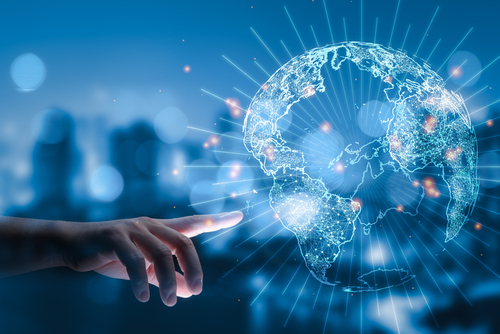
Josie Perry is a National Board Certified teacher in Social Studies-History. She teaches AP Human Geography and Honors United States History at Rising Sun High School in Cecil County.
As a kid, I went through a range of future careers, from meteorologist to paleontologist and everything in between. Teaching was never a consideration, until I realized it allowed me to do the two things I love most–helping people and continuing to learn.
For many, “professional development” is met with an eye roll and probably an audible groan. I get it! I have been through plenty of PD where it was a six-hour lecture on a “relevant” topic as determined by an “educational expert.” The most transformational PD for me has always been self-selected and self-guided; it has taken me around the world.
A student once asked me about the Armenian genocide and I realized I didn’t know much about the often labeled “forgotten genocide.” We found an answer to his question, but I wanted to know more. I found a free self-directed course offered by Facing History and Ourselves. I grew in my knowledge, but I had more questions. A colleague shared her experience with the Genocide Education Project Fellowship and learning about the genocide and Armenian culture in Armenia. While I wasn’t sure I would be selected, I know there is nothing more powerful than place-based learning, so I took a risk and applied for the fellowship—and received it.
To study the genocide at the Armenian Genocide Museum–Institute with leading scholars was invaluable to my understanding both the events and the enduring legacy of the genocide that continues to shape geopolitics today. The museum artifacts tell the stories of not only the victims, but the survivors. In an exhibit on women’s experiences, there was a case containing two sugar cubes that had sustained a small family during one of the many deportation marches into the Syrian Desert. There were numerous stories of resistance in the face of Turkification, including by children keeping their Armenian names written on small strips of paper hidden in their shoes. When learning about genocide, these stories of survival and resistance are important to move students beyond the numbers and humanize the lives lost and those who survived.
Being surrounded by a people who have endured so much tragedy yet remain resilient in spite of ongoing threats was inspiring. Whether it was through traditional carpet weaving or the delicious foods served at every meal, the richness and depth of Armenian culture is ever-present. I learned traditional dances, how to create Armenian bird letters, and how to make delicious lavash. I experienced Vardavar, a pre-Christian tradition that is literally a city-wide water fight. Sharing these experiences with my students allows them to see cultures around the world and appreciate them for their uniqueness and commonalities with American culture.
Whether it’s teaching an economics lesson in the Philippines or helping the Sacred Valley Project clear land for a new dormitory for high school girls in Peru, when I am engaging in PD around the globe, I keep one question at the forefront: How can I bring this experience back to my classroom to enhance my students’ learning experience?
Bringing the world into my class-room allows my students to see that distant countries are not as far away as they may seem. It also helps students see themselves as part of a larger global community because they can see they are more similar than different from others around the world. When students can see themselves as a part of something bigger that is when true intellectual and social-emotional growth can happen, which is our ultimate goal as teachers. Don’t forget the need for your own growth, so take a risk on a new PD experience!
MSEA has members all over the state. Find your affiliate today.
source

![]() , Multimedia Reporter/Producer Nebraska Public Media News
, Multimedia Reporter/Producer Nebraska Public Media News


















